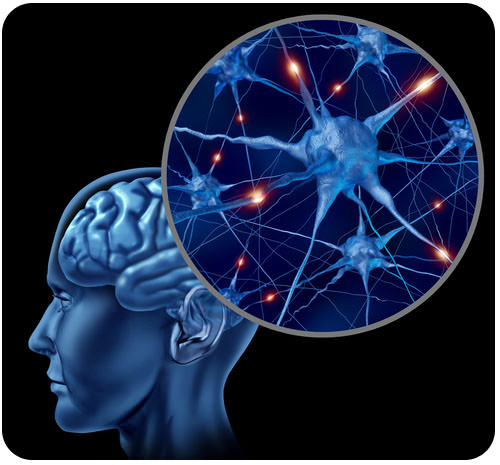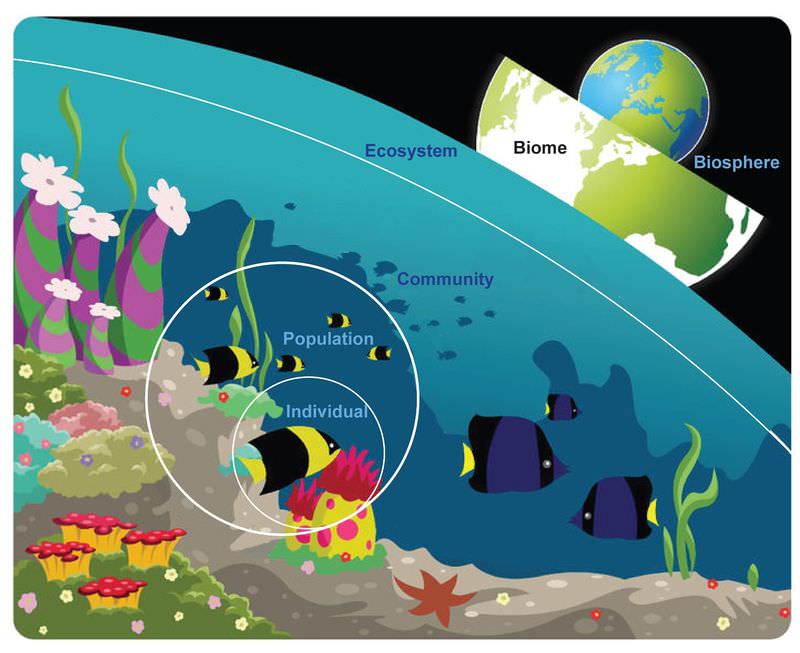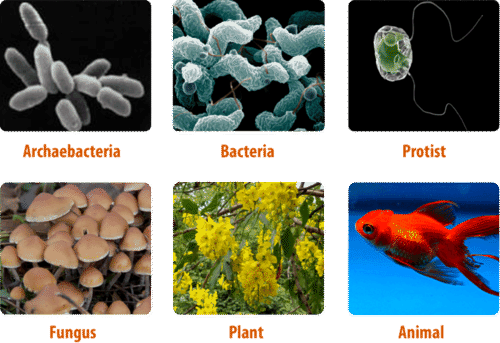1.18: Organization of Living Things
- Page ID
- 8266
\( \newcommand{\vecs}[1]{\overset { \scriptstyle \rightharpoonup} {\mathbf{#1}} } \)
\( \newcommand{\vecd}[1]{\overset{-\!-\!\rightharpoonup}{\vphantom{a}\smash {#1}}} \)
\( \newcommand{\dsum}{\displaystyle\sum\limits} \)
\( \newcommand{\dint}{\displaystyle\int\limits} \)
\( \newcommand{\dlim}{\displaystyle\lim\limits} \)
\( \newcommand{\id}{\mathrm{id}}\) \( \newcommand{\Span}{\mathrm{span}}\)
( \newcommand{\kernel}{\mathrm{null}\,}\) \( \newcommand{\range}{\mathrm{range}\,}\)
\( \newcommand{\RealPart}{\mathrm{Re}}\) \( \newcommand{\ImaginaryPart}{\mathrm{Im}}\)
\( \newcommand{\Argument}{\mathrm{Arg}}\) \( \newcommand{\norm}[1]{\| #1 \|}\)
\( \newcommand{\inner}[2]{\langle #1, #2 \rangle}\)
\( \newcommand{\Span}{\mathrm{span}}\)
\( \newcommand{\id}{\mathrm{id}}\)
\( \newcommand{\Span}{\mathrm{span}}\)
\( \newcommand{\kernel}{\mathrm{null}\,}\)
\( \newcommand{\range}{\mathrm{range}\,}\)
\( \newcommand{\RealPart}{\mathrm{Re}}\)
\( \newcommand{\ImaginaryPart}{\mathrm{Im}}\)
\( \newcommand{\Argument}{\mathrm{Arg}}\)
\( \newcommand{\norm}[1]{\| #1 \|}\)
\( \newcommand{\inner}[2]{\langle #1, #2 \rangle}\)
\( \newcommand{\Span}{\mathrm{span}}\) \( \newcommand{\AA}{\unicode[.8,0]{x212B}}\)
\( \newcommand{\vectorA}[1]{\vec{#1}} % arrow\)
\( \newcommand{\vectorAt}[1]{\vec{\text{#1}}} % arrow\)
\( \newcommand{\vectorB}[1]{\overset { \scriptstyle \rightharpoonup} {\mathbf{#1}} } \)
\( \newcommand{\vectorC}[1]{\textbf{#1}} \)
\( \newcommand{\vectorD}[1]{\overrightarrow{#1}} \)
\( \newcommand{\vectorDt}[1]{\overrightarrow{\text{#1}}} \)
\( \newcommand{\vectE}[1]{\overset{-\!-\!\rightharpoonup}{\vphantom{a}\smash{\mathbf {#1}}}} \)
\( \newcommand{\vecs}[1]{\overset { \scriptstyle \rightharpoonup} {\mathbf{#1}} } \)
\( \newcommand{\vecd}[1]{\overset{-\!-\!\rightharpoonup}{\vphantom{a}\smash {#1}}} \)
\(\newcommand{\avec}{\mathbf a}\) \(\newcommand{\bvec}{\mathbf b}\) \(\newcommand{\cvec}{\mathbf c}\) \(\newcommand{\dvec}{\mathbf d}\) \(\newcommand{\dtil}{\widetilde{\mathbf d}}\) \(\newcommand{\evec}{\mathbf e}\) \(\newcommand{\fvec}{\mathbf f}\) \(\newcommand{\nvec}{\mathbf n}\) \(\newcommand{\pvec}{\mathbf p}\) \(\newcommand{\qvec}{\mathbf q}\) \(\newcommand{\svec}{\mathbf s}\) \(\newcommand{\tvec}{\mathbf t}\) \(\newcommand{\uvec}{\mathbf u}\) \(\newcommand{\vvec}{\mathbf v}\) \(\newcommand{\wvec}{\mathbf w}\) \(\newcommand{\xvec}{\mathbf x}\) \(\newcommand{\yvec}{\mathbf y}\) \(\newcommand{\zvec}{\mathbf z}\) \(\newcommand{\rvec}{\mathbf r}\) \(\newcommand{\mvec}{\mathbf m}\) \(\newcommand{\zerovec}{\mathbf 0}\) \(\newcommand{\onevec}{\mathbf 1}\) \(\newcommand{\real}{\mathbb R}\) \(\newcommand{\twovec}[2]{\left[\begin{array}{r}#1 \\ #2 \end{array}\right]}\) \(\newcommand{\ctwovec}[2]{\left[\begin{array}{c}#1 \\ #2 \end{array}\right]}\) \(\newcommand{\threevec}[3]{\left[\begin{array}{r}#1 \\ #2 \\ #3 \end{array}\right]}\) \(\newcommand{\cthreevec}[3]{\left[\begin{array}{c}#1 \\ #2 \\ #3 \end{array}\right]}\) \(\newcommand{\fourvec}[4]{\left[\begin{array}{r}#1 \\ #2 \\ #3 \\ #4 \end{array}\right]}\) \(\newcommand{\cfourvec}[4]{\left[\begin{array}{c}#1 \\ #2 \\ #3 \\ #4 \end{array}\right]}\) \(\newcommand{\fivevec}[5]{\left[\begin{array}{r}#1 \\ #2 \\ #3 \\ #4 \\ #5 \\ \end{array}\right]}\) \(\newcommand{\cfivevec}[5]{\left[\begin{array}{c}#1 \\ #2 \\ #3 \\ #4 \\ #5 \\ \end{array}\right]}\) \(\newcommand{\mattwo}[4]{\left[\begin{array}{rr}#1 \amp #2 \\ #3 \amp #4 \\ \end{array}\right]}\) \(\newcommand{\laspan}[1]{\text{Span}\{#1\}}\) \(\newcommand{\bcal}{\cal B}\) \(\newcommand{\ccal}{\cal C}\) \(\newcommand{\scal}{\cal S}\) \(\newcommand{\wcal}{\cal W}\) \(\newcommand{\ecal}{\cal E}\) \(\newcommand{\coords}[2]{\left\{#1\right\}_{#2}}\) \(\newcommand{\gray}[1]{\color{gray}{#1}}\) \(\newcommand{\lgray}[1]{\color{lightgray}{#1}}\) \(\newcommand{\rank}{\operatorname{rank}}\) \(\newcommand{\row}{\text{Row}}\) \(\newcommand{\col}{\text{Col}}\) \(\renewcommand{\row}{\text{Row}}\) \(\newcommand{\nul}{\text{Nul}}\) \(\newcommand{\var}{\text{Var}}\) \(\newcommand{\corr}{\text{corr}}\) \(\newcommand{\len}[1]{\left|#1\right|}\) \(\newcommand{\bbar}{\overline{\bvec}}\) \(\newcommand{\bhat}{\widehat{\bvec}}\) \(\newcommand{\bperp}{\bvec^\perp}\) \(\newcommand{\xhat}{\widehat{\xvec}}\) \(\newcommand{\vhat}{\widehat{\vvec}}\) \(\newcommand{\uhat}{\widehat{\uvec}}\) \(\newcommand{\what}{\widehat{\wvec}}\) \(\newcommand{\Sighat}{\widehat{\Sigma}}\) \(\newcommand{\lt}{<}\) \(\newcommand{\gt}{>}\) \(\newcommand{\amp}{&}\) \(\definecolor{fillinmathshade}{gray}{0.9}\)
What does 'Organization of Living Things' mean?
We know it all starts with the cell. And for some species it ends with the cell. But for others, the cells come together to form tissues, tissues form organs, organs form organ systems, and organ systems combine to form an organism.
Levels of Organization
The living world can be organized into different levels. For example, many individual organisms can be organized into the following levels:
- Cell: Basic unit of structure and function of all living things.
- Tissue: Group of cells of the same kind.
- Organ: Structure composed of one or more types of tissues. The tissues of an organ work together to perform a specific function. Human organs include the brain, stomach, kidney, and liver. Plant organs include roots, stems, and leaves.
- Organ system: Group of organs that work together to perform a certain function. Examples of organ systems in a human include the skeletal, nervous, and reproductive systems.
- Organism: Individual living thing that may be made up of one or more organ systems.
Examples of these levels of organization are shown in Figure below.
 An individual mouse is made up of several organ systems. The system shown here is the digestive system, which breaks down food into a form that cells can use. One of the organs of the digestive system is the stomach. The stomach, in turn, consists of different types of tissues. Each type of tissue is made up of cells of the same type.
An individual mouse is made up of several organ systems. The system shown here is the digestive system, which breaks down food into a form that cells can use. One of the organs of the digestive system is the stomach. The stomach, in turn, consists of different types of tissues. Each type of tissue is made up of cells of the same type.There are also levels of organization above the individual organism. These levels are illustrated in Figure below.
- Organisms of the same species that live in the same area make up a population. For example, all of the goldfish living in the same area make up a goldfish population.
- All of the populations that live in the same area make up a community. The community that includes the goldfish population also includes the populations of other fish, coral, and other organisms.
- An ecosystem consists of all the living things (biotic factors) in a given area, together with the nonliving environment (abiotic factors). The nonliving environment includes water, sunlight, soil, and other physical factors.
- A group of similar ecosystems with the same general type of physical environment is called a biome.
- The biosphere is the part of Earth where all life exists, including all the land, water, and air where living things can be found. The biosphere consists of many different biomes.
 This picture shows the levels of organization in nature, from the individual organism to the biosphere.
This picture shows the levels of organization in nature, from the individual organism to the biosphere.Diversity of Life
Life on Earth is very diverse. The diversity of living things is called biodiversity. A measure of Earth’s biodiversity is the number of different species of organisms that live on Earth. At least 10 million different species live on Earth today. They are commonly grouped into six different kingdoms. Examples of organisms within each kingdom are shown in Figure below.
 Diversity of life from Archaebacteria to Plants and Animals.
Diversity of life from Archaebacteria to Plants and Animals.
Summary
- Many individual organisms can be organized into the following levels: cells, tissues, organs, and organs systems.
- An ecosystem consists of all the populations in a given area, together with the nonliving environment.
- The biosphere is the part of Earth where all life exists.
- The diversity of living things is called biodiversity.
Review
- Describe the levels of organization of a complex, multicellular organism such as a mouse, starting with the cell.
- Explain how a population differs from a community.
- What is an ecosystem?
- Give three examples of the nonliving environment.
- What is biodiversity?
| Image | Reference | Attributions |
 |
[Figure 1] | Credit: Tsutomu Takasu;Archaebacteria: NASA; Bacteria: De Wood and Chris Pooley/Agricultural Research Service, USDA; Protist: Image copyright MichaelTaylor, 2014; Fungus: Tony Hisgett; Plant: Mauro Guanandi; Animal: Elma Source: commons.wikimedia.org/wiki/File:Flickr_-_tpower1978_-_Toray_PPO_Tennis.jpg ; Archaebacteria: commons.wikimedia.org/wiki/File:Halobacteria.jpg ; Bacteria: commons.wikimedia.org/wiki/File:Campylobacter.jpg ; Protist: http://www.shutterstock.com/ ; Fungus: http://www.flickr.com/photos/hisgett/4086503406/ ; Plant: http://www.flickr.com/photos/mauroguanandi/2194637211/ ; Animal: http://www.flickr.com/photos/24710622@N05/3230447306/ License: (Archaebactera, Bacteria) Public Domain; (Protist) License from Shutterstock; (Fungus, Plant, Animal) CC BY 2.0 |
 |
[Figure 2] | Credit: Mariana Ruiz Villarreal (User:LadyofHats/Wikimedia Commons);Bruce Wetzel and Harry Schaefer/National Cancer Institute; Mike Seyfang; Umberto Salvagnin Source: commons.wikimedia.org/wiki/File:Organization_levels_mouse.svg ; commons.wikimedia.org/wiki/File:SEM_blood_cells.jpg ; http://www.flickr.com/photos/mikeblogs/3101400087/ ; http://www.flickr.com/photos/kaibara/2865288013/ License: Public Domain; Public Domain; CC BY 2.0; CC BY 2.0 |
 |
[Figure 3] | Credit: Christopher Auyeung Source: CK-12 Foundation License: CC BY-NC 3.0 |
 |
[Figure 4] | Credit: Archaebacteria: NASA; Bacteria: De Wood and Chris Pooley/Agricultural Research Service, USDA; Protist: Image copyright MichaelTaylor, 2014; Fungus: Tony Hisgett; Plant: Mauro Guanandi; Animal: Elma Source: Archaebacteria: commons.wikimedia.org/wiki/File:Halobacteria.jpg ; Bacteria: commons.wikimedia.org/wiki/File:Campylobacter.jpg ; Protist: http://www.shutterstock.com/ ; Fungus: http://www.flickr.com/photos/hisgett/4086503406/ ; Plant: http://www.flickr.com/photos/mauroguanandi/2194637211/ ; Animal: http://www.flickr.com/photos/24710622@N05/3230447306/ License: (Archaebactera, Bacteria) Public Domain; (Protist) License from Shutterstock; (Fungus, Plant, Animal) CC BY 2.0 |

